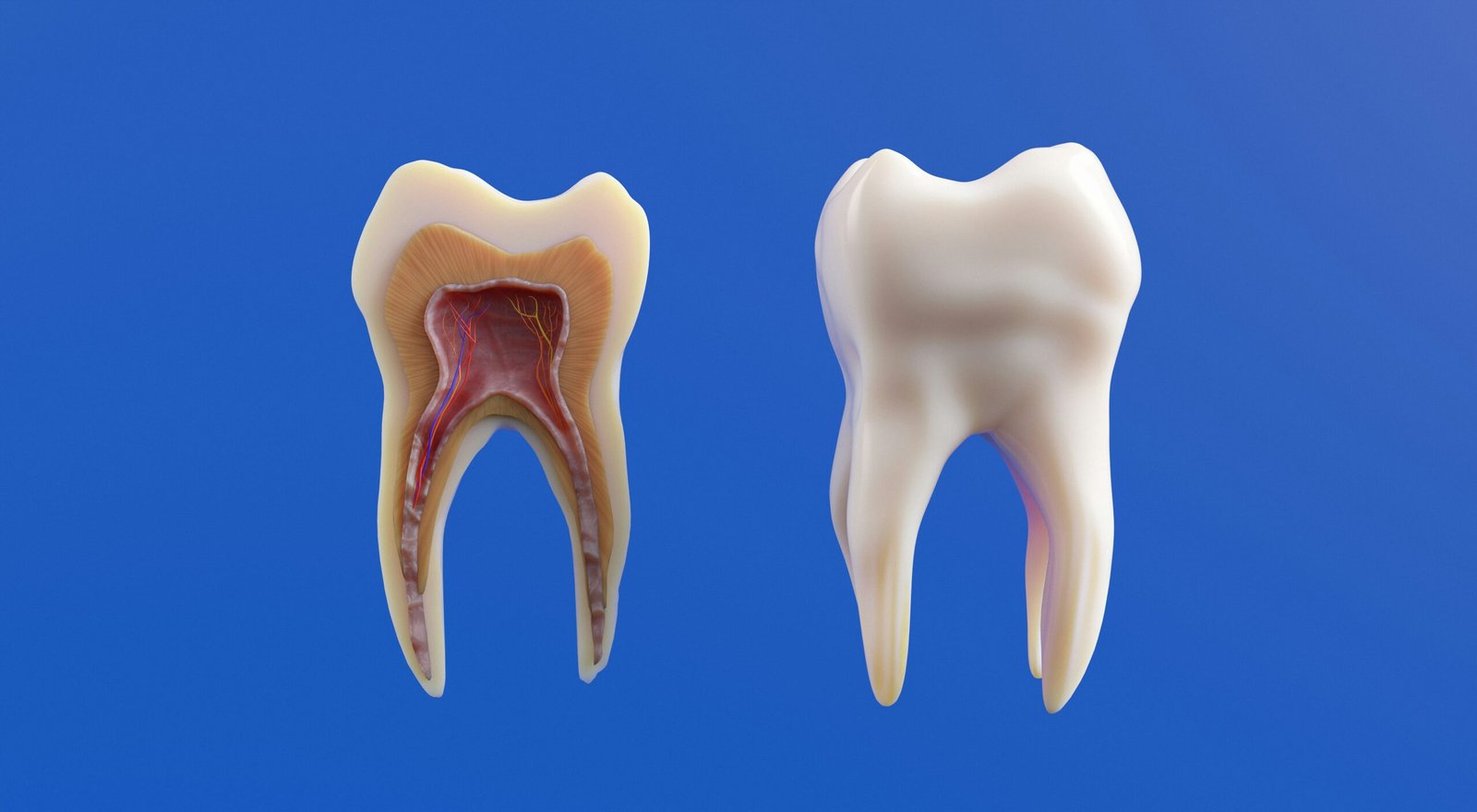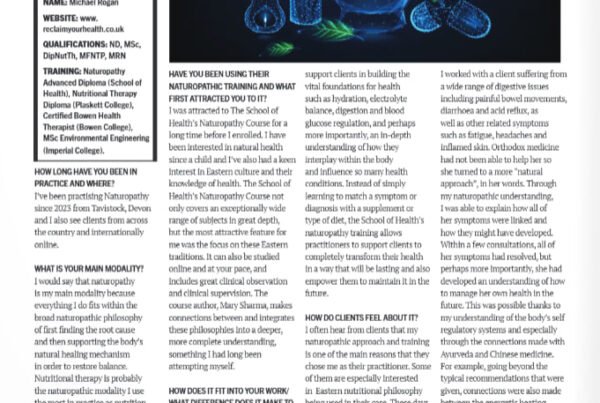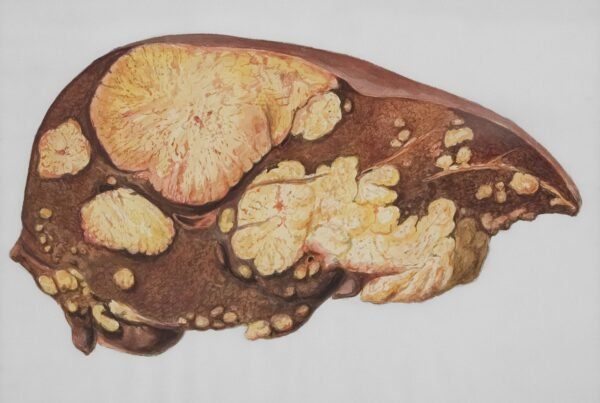Modern dentistry employs a wide range of procedures designed to support the maintenance of our teeth and our bite, with the primary aim being to maintain a set of teeth that can be utilised for eating and chewing without pain. Very often these days however, the cosmetic aspect of dentistry is given a prominent place in decision making, with whitening procedures, orthodontic work to give people more attractive smiles, and even extractions of healthy teeth to be replaced with implants for cosmetic reasons only. Because dentists are limited in their training to the teeth themselves, usually not even taught to take into account the most utilised joint in the body, the temporomandibular joint (TMJ), and its importance, their decisions can often have unforeseen consequences on the health of the rest of the body. In this essay, I will explore a range of common dental procedures and consider their potential effects which are often missed by patients and dentists alike.
Are you interested in addressing a health issue which may be related to dental work? Or would you like support with this topic for your health? Click here for more information about my consultations.
The most common and often the first procedure to be carried out on a person’s teeth is the filling. Fillings are used when dental caries are detected, unfortunately without much attention given to the possible causes of said caries (which could encompass faulty breathing habits, mineral deficiencies and other related issues). They are designed to stop further decay of the teeth by protecting the fragile internal parts from the the outside world. Much of the potential harm that can come from fillings towards the health of the rest of the body comes from the materials chosen in their use. The most common materials used for fillings are amalgam, composites, gold and glass ionomers (Sharma, 2019). While usually considered inert once they have been placed, various substances used in the filling materials, most notably the mercury in amalgam, have been proven to leach continuously into the body, especially during the process of chewing, smoking, brushing the teeth or while consuming hot beverages or acidic foods (Williams, 2011).
Mercury, one of the most poisonous substances on Earth, can cause a wide range of symptoms within the body. The highest source of exposure to mercury is thought to be from amalgam fillings, more so than the often discussed exposure from fish or that from certain vaccines. While the safe limit of mercury is the air set by the US environmental protection agency is 1 mcg, levels of 10 and 20 mcg and as much as 200 mcg have been measured inside people’s mouths with amalgam fillings, according to Dr David Minkoff (Sharma, 2019). Over 20,000 studies exist which show mercury to be unsafe (Roberts, 2017), yet amagam is still offered as the first option for fillings in the majority of practices for the majority of patients. Build up of mercury in the body or acute exposure can lead to symptoms in the gastro-intestinal tract via the swallowing of saliva which include (Sharma, 2019):
- Constipation, diarrhoea and IBS;
- Abdominal cramping and pain;
- Leaky gut and the development of food allergies and sensitivities;
- Malabsorption; and
- Nausea and heartburn.
Mercury is a potent neurotoxin and through everyday breathing, especially via the nose, mercury vapours quickly reach the brain. Access to the brain can also be achieved via axonal transport (the nerves) and venous circulation. Via the lungs, mercury can access the blood stream and subsequently all of the tissues in the body. Furthermore, if certain bacteria are present in the oral cavity or the gut, the metallic mercury can become methylated, making it ten times more toxic. Mercury exposure through amalgam fillings can severely damage the nervous system and lead to neurodegenerative diseases like Alzheimer’s, multiple sclerosis, brain cancers, epilepsy and schizophrenia. In addition to the nerves, mercury has a particular affinity for the kidneys and can cause severe kidney damage this is often undetected. When mercury enters the cells of the body, it interferes with the energy production of the cell which can contribute towards chronic fatigue and related symptoms as well as infertility and cardiovascular disease. The effects of mercury can also be seen on the skin via erethism or even eczema. Changes in the gut can take place as the body allows increased growth of Candida albicans and other pathogenic organisms because they bind with mercury. The toxic bi-products of these organisms can cause many of the gastrointestinal symptoms mentioned above (Williams, 2011).
Other commonly used materials for fillings include composites and gold. Composites do not last as long as amalgam and can be harder to set in place, especially for larger fillings. Some brands also contain aluminium, which can be toxic for the brain in particular, and estrogenic bisphenols (Sharma, 2019). Gold fillings are not pure gold, they are alloys which give the filling more strength and durability. The presence of any metals in the mouth can cause issues due to potential allergies to the metals as well as how they act as an antenna for electromagnetic radiation. More concerning is when mixed metals are present in the mouth, whether in the form of alloys, different types of fillings or in various other items such as crowns or implants. This creates an electric current within the mouth due to the phenomenon of dental galvanism. This not only leads to a greater release of mercury (Quicksilver associates, 1996), where amalgams are present, but can also cause symptoms such as tingling, anxiety, fatigue, a metallic taste in the mouth, insomnia, headaches, rashes, tooth sensitivity, mental sluggishness, memory problems and lichen planus (many references provided in Sharma, 2019).
Crowns are often used when the decay is too extensive for the placement of a filling. They are designed to preserve the look of a tooth and its function. The outside of the crown is usually made of porcelain and the inside of a metal allow that often contains nickel. Sometimes gold alloys are used. The issue of mixed metals in the mouth was covered in the previous paragraph. Nickel is a common allergen and metal allergies are rarely checked before installation of dental work. Furthermore, this metal is known to cause DNA damage and to be carcinogenic. Nickel also has significant effects on the immune system through the destruction of T-cells and natural killer cells (Eggleston, 1984).
When a crown fails or if the decay is too extensive for the use of a crown, the next commonly used procedure is a root canal. The effects of root canals on the health of the body is such an extensive topic that this could fill an essay alone. This procedure entails the drilling out of the interior of the dead tooth, filling the inside and attempting to seal the bottom with gutta-percha rubber or an alternative material and then capping the tooth with a crown. The idea is the preserve the bite without the use of an implant. The issue is that due to the many miles of small channels, it is impossible to properly sterilise the tooth, so bacteria will remain present. The root canal cuts off access of the immune system to the area, so the residual infection can no longer be addressed by the body. The anaerobic conditions present in root canalled teeth lead to the proliferation of especially pathogenic bacteria and toxic bi-products. Often, leaks occur at the base of the tooth, especially as gutta-percha shrinks upon sealing (Williams, 2011), allowing the bacteria and their toxins to migrate to the rest of the body. Root canals have been especially linked with significant heart issues (Gomes, 2016).
Extractions are generally the next step available when the tooth becomes too infected to save, or if a root canal fails. When an infected tooth is removed, this is generally a positive thing for the body as a source of toxins and bacteria is removed. However, extractions are often carried out on healthy teeth when the jaw does not have enough space to accommodate all of the teeth, mostly commonly, but not always, on wisdom teeth. A more effective long-term approach would be to target widening the jaw through the use of functional appliances to make room for all of the teeth. The identical twin study carried out by Dr Terrance Spahl clearly showed the different results achieved by the two approaches (Williams, 2011). If the jaw is widened, this also assists with breathing and brain development, through extra space in the sinuses and cranial cavity. A significant risk with extractions is that of cavitation. These are holes in the jaw bone which can develop as a result of an extraction or for other reasons. This can happen when the peridontal ligament is not removed during an extraction, through the use of adrenaline in the local anaesthetic which slows the return of blood to the area, or other reasons, and leads to death of the bone cells in that area. The dead bone cells become infected with pathogenic anaerobic bacteria which slowly destroy the jaw bone, causing a hole. The issue can then spread and affect other teeth nearby (Sharma, 2019).
After an extraction has been carried out, the vacant space is either left empty, which risks the other teeth moving over time and leading to malocclusion and TMD, or an implant or bridge is placed. Both bridges and implants generally involve crowning the adjacent teeth to provide extra strength (the health implications of crowns were covered earlier). Implants are the other option and come with important considerations of their own. The most common implant material used is titanium, which increases the amount of metal in the mouth, potentially worsening dental galvanism, exposing the patient to a potential metal allergen and increasing the EMF issue. A newer material called zirconium is now available which is not a metal so can help to avoid those issues. However, it is not as strong as titanium, so can break more easily. Regardless of the material, implants themselves can cause various issues such as providing a base for bacteria to grow and through spreading infection when they are placed into sites of cavitation (Sharma, 2019).
A further general note on the effects of all of these procedures, regardless of which is undertaken, is the corresponding effect on different parts of the body via the meridian system on which that tooth or teeth lie. For example a root canal or infected tooth can lead to remote symptoms whose cause is often not understood to be related to the oral cavity.
Are you interested in addressing a health issue which may be related to dental work? Or would you like support with this topic for your health? Click here for more information about my consultations.
In conclusion, it is clear that the every day work of dentists can have a significant effect on the health of the entire body. Often, the effects do not make themselves apparent until much later, so the links are not often made. A thorough understanding of the potential health effects of these common procedures is vital for all holistic health practitioners to assist them in identifying the potential root causes of their client’s symptoms.
References and further reading
Eggleston, D. DDS, 1984, Effect of Dental Amalgam and Nickel Alloys on T-Lymphocytes: Preliminary Report, The Journal of Prosthetic Dentistry, Volume 51, Issue 5, pages 617-623
Gomes, M, Hugo, F., Hilgert, J. et al., 2016, Apical Periodontitis and Incident Cardiovascular Events in the Baltimore Longitudinal Study of Aging, International Endodontic Journal, 49:334-342. PMID: 260110080
Quicksilver Associates, 1996, The Mercury in Your Mouth, pages 24-25, Quicksilver Press, New York
Roberts, J. DDS, 2017, Dental Mercury amalgams-will their use ever end? The current state of play, Only Natural Natural Dispensary Journal, Winter 2017
Sharma, M., 2019, Naturopathy Course Notes, Module 10: Oral Health, School of Health, Stroud, UK
Williams, L., 2011, Radical Medicine, Healing Arts Press, Vermont, USA





